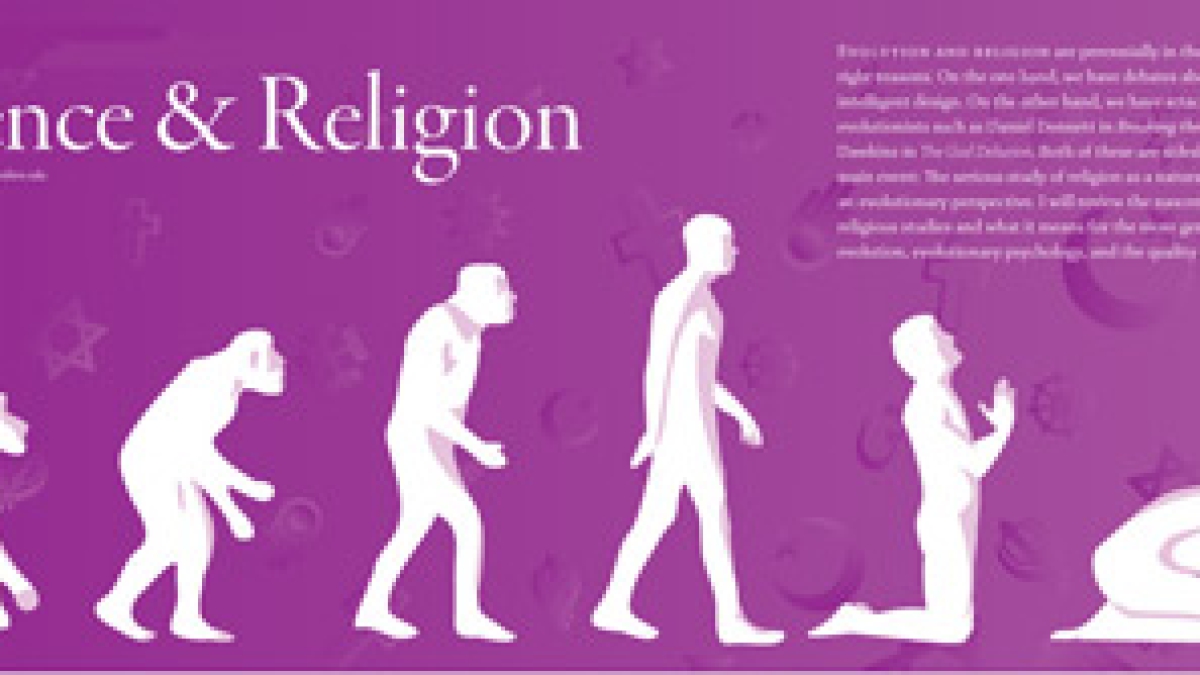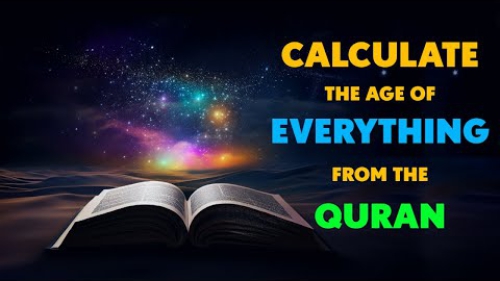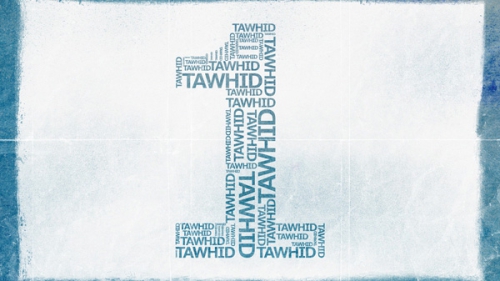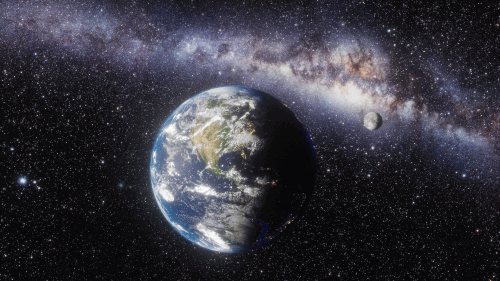Evolution and Religious Developments

 |
The Qur'an teaches us that, unlike other creatures, Homo Sapiens have been created to be Vice-regents on this earth. (2:30, 35:39, 38:26) Of the millions of species on this planet, only one can consciously have an impact on the evolution of life. That species is Homo Sapiens. Religion provides guidance and direction to enable humans to be good Vice-regents (agents of God) rather than destroyers of society and nature. The Qur'an also teaches that we should be able to see majesty in God by seeing that God has created humans in different, successive stages (71:14) and has caused us to grow from earth like a plant. (71:17) If for some reason we do not want to see God's majesty in the evolution of life in general and human beings in particular there is something the matter with us. (71:13) If this is so, why do some people (primarily evangelical Protestants) think there is a great conflict between evolution and religion
A great deal of unnecessary conflict and misunderstanding has been caused by the careless use of the terms 'human' and 'man' by evolutionists to describe the increasing number of fossil finds of tool using biped primate species (over a dozen now) that may have been ancestral to Homo Sapiens. I shall try to refer to each distinct species by its scientific name only. Recent fossils found on Flores Island in Indonesia in September 2003 are from a new species of tool using bipeds named Homo Floresiensis that lived as recently as 20,000 years ago. They are not pygmy Homo Sapiens. They used fire (in use by pre Homo Sapiens species for more than half a million years) and made stone tools, but we do not yet know if there is any evidence of ritual burials, which are the earliest forms of non-material cultural/religious activity. Most people think that the name 'human' or 'mankind' should be reserved only for our own species. Not using the name 'human' and 'man' carelessly would help resolve most of the conflict over the theory of evolution. The theory of evolution can help us understand why religion is so important for human survival and why religion is universal. Indeed, modern Homo Sapiens would be better named Homo Religiosus, a term used by many scholars in religious studies and anthropology.
The evolution of spiritual activities that enhance the successful survival of humanity is not only concerned with enhancing the survival of our own species. With the recent domestication of plants and animals and the very recent industrial revolution, Homo Sapiens (HS) acquired a great deal of responsibility for the evolution of most of the species on the planet itself. The ability to genetically modify both plants and animals gives humanity a significant role in the future evolution of life. Thus the behavior of religious people themselves now becomes a factor in the evolution of life on earth. Religious behaviors are evidence of self-conscious creative thought processes most people associate with Homo Sapiens. Religious behaviors are the creative responses of intelligent minds to certain challenges in social and personal life. As I already wrote the Qur'an teaches us that, unlike other creatures, Homo Sapiens have been created to be Vice-regents on this earth. (2:30, 35:39, 38:26) Only one of millions of species on this planet, can consciously have an impact on the evolution of life. That species is Homo Sapiens. Religion provides guidance and direction to enable humans to be good Vice-regents rather than destroyers of society and nature. Thus it is only natural that God has inspired thousands of individuals (124,000 according to Muslim tradition) to urge their communities to live according to God's will. But first God had to prepare humans (pre Adam) to be receptive to the words of the prophets. Although no one knows exactly how God works the following scenarios seem reasonable to me.
All sentient beings are able to respond to the challenges of life. In each species some individuals respond to new environmental challenges better than others do; and their descendants increase. Some sentient beings that are conscious are capable of learning from the challenges of life. They can improve themselves. A few are even able to show others what they have learned and thus improve their group and their descendants chances of survival. These species have developed cultural ways of meeting life's challenges. For many centuries it was thought that mankind's ability to use tools was what made us unique. However, we now know that several different species use tools (including birds) and Chimps not only use but also make at least three different kinds of tools for different functions. Chimp tool use differs in different locations (a cultural not a genetic difference). Chimps also show signs of self-awareness by recognizing themselves in a mirror. So what makes us what we are?
First, we are small group, hierarchically organized, social primates. Any genes that enable the group (extended family and/or band) to function better will contribute to individual survival and reproduction. Second, the species that preceded Homo Sapiens and Homo Neanderthal have been evolving larger and larger brains for several million years. Eventually two species, Homo Sapiens and Homo Neanderthal evolved that achieved self-conscious ways of meeting life's challenges through non-material i.e. cultural and spiritual behaviors. (Homo Neanderthals is a species physically close to Homo Sapiens whose last common ancestor shared with Homo Sapiens lived about 660,000 years ago according to a DNA study published in 2008. HN co-inhabited in Europe and parts of western Asia with HS- anatomically modern humans, from about 120,000 to 29,000 years ago. HN were well adapted to the cold and were very muscular. They had slightly larger brains than HS) Increasing dependence on mental capacities became problematic for those individual HN and HS who malfunctioned mentally. Any genes that would help correct or ameliorate individual mental challenges would be selected for and would spread throughout the population. Spiritual activities among HS have evolved over the last 120-160,000 years. If one takes seriously the Biblical claim that humanity was created in the Divine image, spiritual evolution testifies to the creation of creatures who are co-creaters of purpose driven non-material responses to environmental and social challenges.
Homo Sapiens (HS) faced at least half a dozen different challenges over the last 150,000 years that stimulated spiritual developments that improved survival rates both for groups and individuals within the group. One of the greatest challenges to increased intellectual development is anxiety and self-imposed stress. The more HS can think about things, the greater the ability to produce anxiety and self-imposed stress that are debilitating by themselves, and also depress the immune system. Anything that reduces stress and anxiety increases survival rates for intelligent minds. Also as successful groups got larger it became harder and harder to keep them from internal conflict and splitting. Larger groups, or groups with strong alliances, were more likely to win when there was intergroup conflict and had reduced negative affects from inbreeding. Anything that helped larger groups create bonds that were more than family, and behavioral norms that were more than mimicking would increase survival rates. Individuals with a mental illness could not contribute much to a tribe or band. Anything that helped heal or integrate these individuals would help survival rates. These are some of the situations faced by a species that began using its mind more and more.
The first challenge is also the ultimate one: death. Homo Sapiens is the only living species that knows in advance that death is inevitable. Genesis 2:17 teaches "on the day you eat it (the tree of knowledge of good and evil, you will know) you will surely die." Elephants, Chimpanzees and Orangutans have been observed to mourn for a dead child, but no other living species practices ritual burial. The intelligent minds of HS responded to the death of loved ones by creating funeral rites and rituals of ancestor worship. Evidence from Qafzeh cave in northern Israel of ritual burial and grave goods (red ocher and mollusk shells of an inedible species) goes back 100 -120,000 years or more. These funeral rituals brought comfort and solace to the mourners. Funeral rituals also had the important effect of strengthening group solidarity at a time when leadership might be challenged and changing. Strengthening group solidarity reduced internal conflict and violence thus increasing the chances of raising children to adulthood.
Although other species also dream, the intelligent minds of HS creatively concluded that dreams about the dead showed that the dead were still active and could continue to help their descendants. Thus departed spirits ought to be venerated and worshiped. . It is possible that nomadic hunter-gatherer bands used the skulls of important individuals in community rituals for many centuries. Two HS skulls from Herto in Ethiopia, well worn through handling, have been dated to more than 140,000 years ago. These ritual activities strengthened feelings of kinship within and among hunter-gather bands enabling them to be more stable and grow larger. This in turn increased the chances for survival of individuals within the more effective bands and clans. Ritual activities and ideas about help available from deceased ancestors reduced stress and anxiety and so led HS to expand the realm of spirits to the treatment of physical and mental illness. We now know that anxiety and stress weaken the immune system and increase the chances of not surviving an otherwise survivable illness. Anything that reduces anxiety and stress increases survival rates. This is one key reason that religious behavior became ubiquitous.
Illness, especially mental illnesses that tend to be chronic rather than fatal, provided serious challenges to the intelligent minds of HS. Epilepsy, Schizophrenia, Obsessive Compulsive Disorder, Phobias, Bipolar Disorders and other brain diseases occur in at least 2-3% of the population worldwide. Thus there should be at least one or two cases in every band of 50-100 people. Severe cases are very scary and disabling, but the intelligent minds of HS could react to the challenge of mild cases with a variety of rituals and practices that served to alleviate the symptoms through mind-body interactions that we recognize today as placebo faith healing. Placebo faith healing works primarily by reducing pain through endorphin release and increasing the strength of an individual's immune response, which is weakened by stress and anxiety. Only HS are known to be capable of placebo spiritual healing. Among HS today only a minority of individuals are able to heal themselves with the aid of placebo faith healing. The hope that ritual can heal and the ability to trust a healer are powerful factors that frequently bring about improvement. Chanting, drumming, dancing, meditation and fasting are widespread ways of inducing an alternative consciousness that helps alleviate pain, stress and anxiety. With the support of a community of believers, and a tradition that enhances their individual hope and trust results would be even better. A cure, either short or long term, isn't the only outcome in faith healing. The ceremony itself can reduce many of the side effects of the illness such as depression, stress, anger and negativity. This often ameliorates symptoms and brings relief. Chronic illness negatively impacts the immune system and eventually increases death rates. Ritual faith healing ameliorates symptoms for many people in these types of situations. This reintegrates the 'possessed' into a support group and reduces stress, strengthens the immune system and reduces death rates.
A tiny charismatic minority, who themselves had struggled successfully to overcome these diseases, may became guides to others. These Shaman guides undertook journeys into a realm of evil spirits who they believed had caused these afflictions and effected cures. A 45-60,000 year old site in a cave at Shanidar, Iraq yielded the skeleton of a badly disabled older Homo Neanderthal that the excavator thought might be a Shaman. Since this individual could not hunt and thus support himself, the excavator suggested that the man disfigured by his shrunken arm and damaged eye, was thought "touched" by the spirits. Thus he might be able to communicate with them on behalf of the community. So the band had supported him, while he intervened with the spirits on their behalf. The bear skull found next to him, the red flowers piled upon his grave, and a ring of stones around the grave are all evidence of his ritual importance. His advanced age suggested that his HN group revered him for years.
Elders of each family unit, usually in the home, regularly carry on ancestor worship to this day in East Asian religions. Shamans however, were called in as specialists for unusual situations. These Shamans were the first professionals. Their disciples were their most successful patients. Shamans in different bands and tribes most likely exchanged experiences and techniques with each other. Recent outcomes of psychotherapy studies have shown that Native American Healers have cure rates similar to those of modern clinical psychologists. The growing awareness of positive religious influences on restoring health has even entered medical school curricula. In 1995 only 17 American medical schools incorporated patient spirituality in their curricula; ten years later the number had increased to 101.
Brain diseases may be mysterious and scary but they are not contagious. Infectious diseases are. The intelligent minds of HS observed the spread of disease by contact or proximity and concluded that dangerous invisible pollution could occur. The most obvious source of pollution was a new corpse. It could pollute its surroundings and the people it came in contact with. This pollution is contagious. Even second and third hand pollution is dangerous. And very small amounts of pollution are also dangerous. Thus action must be taken to isolate or purify what has become polluted. Fortunately this can be done with specific rituals which serve to alleviate anxieties and stress caused by the spread of contagious diseases. Although newly dead corpses are the most potent source of contagion, fresh blood, especially menstrual blood and the blood of childbirth (a time of great danger to both mother and newborn due to infection) is also disturbing. By extension, other bodily issues like nocturnal emissions; running sores, and some activities like slaughter; and breaking taboos can also be viewed as polluting. Those who devoted themselves to restoring ritual purity achieved status and power. Their techniques and personalities were more bureaucratic than those of the charismatic Shamans, and so they were more likely to establish a hereditary priesthood. Ritually purifying things that were polluted became important to restoring a positive, hopeful and therefore healthy balance to society. Quarantining ritually polluted people and objects also sometimes reduced vulnerability to contagious disease.
 |
Without successful reproduction no species can flourish, or even survive. HS were as subject to the biological imperative (commandment) to be fruitful and multiply as all other species. But the intelligent minds of HS knew the dangers of childbirth. Infant mortality rates in most tribes were more than one in four. The maternal death rate for every four births was more than one in ten. Pregnancy was highly desired and birth anxiously awaited. Pregnant women naturally sought the physical help of their mothers and grandmothers who in turn sought the spiritual help of their now departed mothers and grandmothers. Among the earliest Gods were birth Goddesses. Small stone figures of very pregnant birth Goddesses often referred to as "Venus" figures go back 30-35,000 years. They are the first examples of iconic religion. The worship of spirits within natural phenomena does not need iconic representation. But birth rarely took place in the open or in public. The birth Goddess needed to be present in some tangible way in order to ease the anxiety of women in labor. Even today in some African countries the maternal mortality rate is 3% per birth. A woman who gave birth to 8 children had a one in four chance of dying from giving birth. Any band would benefit even if the presence of Goddesses reduced that mortality rate by only 5%. Carvings in wood of birth Goddesses probably preceded stone statues by many millennia and may have originated 50-100,000 years ago.
Shamans also found that visual aids helped their patients relate to the mysterious struggle that the Shaman fought in the foreign spirit world. Since the spirits of animals were often involved both as friend and foe, much of prehistoric rock art (especially in difficult to access caves) probably relates to Shamanistic healing rites. Eventually iconic representations of gods and spirits would become almost universal. In historic times these icons would be viewed by increasing numbers of people as representatives rather than incarnations of the Divine.
There was no reason to limit activities of spirits to the realm of the dead or the diseased. All natural phenomena could be motivated by spirit minds. Self aware intelligent minds that can read the intentions and motivations of others can also project all kinds of motivations on to other people, animals, objects and events. The movement of herds; the quantity of animals, fruits and spring water; thunder, floods and drought; indeed everything that happens in nature can be ascribed to the will of spirits. Gifts and offerings should be able to influence these spirits (intelligent minds do not like to admit to impotence) and so regular offerings should be made by a group/clan/tribe, to keep the natural forces friendly. Western anthropologists influenced by Christian thinking refer to these offerings as sacrifices. The biblical Hebrew term korban is both more accurate and more insightful. The verb l'karayv means to draw near or come close. A korban is a way to attach, engage or bind the human realm to the spirit realm. When food and drink are offered to another it is not a sacrifice. Food and liquid offerings are an invitation to a closer relationship. Especially during ceremonial occasions food and drink serve to bring people together, including those who have been estranged from one another because of transgressions that have occurred. Thus offerings to the Gods can help people who feel estranged from God return to a closer (karayv) relationship. Offerings help people reunite or reconcile with God. The food offered to a God is usually eaten wholly or in part by those who contribute it or by the priests who offer it. The Biblical God doesn't want grain or meat offerings (Psalm 40:7). Humans offer them, especially when they feel estranged from the Divine, in order to draw closer (karayv) to the Divine. Only human sacrifice should be called sacrifice. While human sacrifice was widespread in the past it was usually relatively rare.
Ritual specialists, who unlike charismatic Shamans are more likely to be administrator types, usually direct these offerings. As time goes on the rites tend to get more complex and the necessary skills require more training. Those people performing the complex rites easily become a hereditary cast of professional priests. They sometimes also offer an alternative type of leadership to that of the hunter/warrior types. Priests can become the custodians of the customary law of the tribe. Priests can offer advice to help in making important decisions by consulting the gods to determine their will. Fortune telling enables decision-makers to avoid the backlash of wrong decisions while claiming credit for the good ones. Divination also reduces many people's anxiety about difficult decisions in unclear situations. Even today millions of Americans still consult astrology charts and in Asia people in many Buddhist temples still cast their fortunes.
Most people feel better when they are in control of the important factors in their life. The strong desire for control coupled with belief in good and evil spirits eventually leads some HS intelligent minds to attempt to force a spirit do what an individual wants it to do. Magic is an attempt to subjugate a force in the spiritual world for another person's weal or woe. Magic is always dangerous because people believe that the spirits do not like to be enslaved by humans and power tends to corrupt even those with good intentions. Yet many tribal religions still have lots of room for defensive magic and even those religions that condemn magic have occasional practitioners. Again, the mind-body placebo effect makes magic effective in some societies where belief in magic and superstitions is widespread and well accepted. Accusations of magic and witchcraft are also widespread in some tribal societies. They can be the result of paranoia or scapegoating as often, if not more often, than the actual incidence of magic. Magic and superstitions are the dark side of HS spirituality.
Small groups that lack an incest taboo will be plagued by the ills of inbreeding; therefore exogamy in mating will be selected for. As ancestor worship strengthens kinship ties over more and more generations, it also expands kinship ties over more nomadic bands creating extensive clans and tribes. These clans and tribes gather periodically at a special place to exchange future mates. They also started exchanging i.e. trading for desirable objects not found in their usual local. Seashells, obsidian, red ocher and other materials have been found in campsites and graves more than 100-200 miles away from their closest source. The stronger the attraction of a special place, the greater the effort that distant clans will make to attend, so gathering spots that are turned into sacred sites of pilgrimage through special seasonal rites will enrich human communities. There are scholars who think that HS advanced trade networks helped them out compete Homo Neanderthals in Europe (recent studies of Neanderthal DNA have shown that they were a distinct species not ancestral to HS). The need for all the clans to show up about the same time leads to fixed seasonal holy days and a religious calendar. The need to mark time for pilgrimage festivals led people to study the cycle of the moon and the movement of the constellations and thus move some of the spirit powers into the sky. Pilgrimage festivals still have major economic impact and serve in most religions as great sources of religious experience and solidarity.
Most but not all, spiritual forces are viewed as personalities. In some cultures an impersonal force (referred to by anthropologists as Mana) is believed to manifest itself in certain individuals or classes of people and accounts for and rationalizes good or bad luck as well as personal, family or clan/class success and failure. Ritual pollution is usually viewed as an impersonal power and its cure depends upon impersonal bureaucratic techniques. But in most cultures the spirits are personified and ties of kinship relate the various spirits to each other. And in most of these cultures all or almost all of the spirits are said to be descendants of an original Divine couple, or individual, or egg, or something else. This "creator" god is usually not central to the spiritual realm in later times just as a great-grandparent is understood as being a progenitor who is revered but no longer active or powerful. Monotheism does not seem to arise naturally from these creator Gods and there is no tendency for the number of Gods to diminish until it arrives at one. Since all living beings come from other living beings i.e. begets or is begotten (Qur'an 112:3) it is very hard for people to conceive of a sole God who is the first cause of all the observed diversity. Although in historic times there have been individuals in every society who preach monotheism, they are almost always reviled and rejected by the great majority of their people. Prophets who reveal a book of sacred scripture, are very, very rare and are clearly not the product of natural evolution. This is the major difference between revealed and natural religions.
In small groups moral values can be based on utilitarian principles like do to others as you want them to do to you, or what goes around comes around. But in larger more complex societies with diverse classes and castes it may be more effective to root ethics in transcendent terms since there are not enough repeat interactions to validate utilitarian morality. As tribes became larger and villages grew, a judge who rewarded good people and punished evil people helped the community to instill its norms in its members. With the exception of a sociopath, the intelligent minds of HS also have a conscious, self-evaluating, purpose driven aspect that needs to be satisfied because groups with a higher percentage of these kinds of minds were more stable and more effective. Guilt arises from many activities and needs to be atoned for. Self-discipline provides many advantages for an individual's survival and success. Most people, and all societies, need the structure of rules, community and divine discipline to maintain self-control. Hunters needed to kill animals, yet they obviously felt ambivalent about it because almost all human societies have rules either about offering some of the kill to the spirit of the animal killed, or a taboo on killing or eating certain animals. There are much fewer rules relating to eating plants. Spilling blood intentionally is fraught with spiritual ambivalence and tension that needs to be dealt with.
Sex is also never simply a natural act for HS. The mind is always involved. It is not just chance that the first thing HS becomes self-aware of in the Garden of Eden is the shame of being naked. (Qur'an 7:22 and 20:121) HS is the only living species that thinks it must clothe itself. Evidence of textiles from more than 20,000 years ago has been found in the cold climates of ice age Europe. However, the origins of clothing in Africa are the not the result of ice age climate but the result of concepts of modesty. Self-aware intelligent minds became moral minds, which became modest minds. Recent DNA studies of body lice that must lay their eggs in clothing, show that these lice evolved from pubic lice that adapted to clothing that covered the pubic area. This genetic adaptation took place 42-72,000 years ago. Thus, HS have been clothing themselves for at least 42-72,000 years. Long before rules about property became important, rules of probity were important.
The age when sexual modesty became evident is important. The Bible states that the first thing humans became aware of after internalizing the knowledge of good and evil was their nakedness. If this occurred 50-60,000 years ago it fits right in with increasing evidence of more rapid spiritual and technological development. The tool kit of Homo Erectus, a species prior to HS, changed very slowly over the course of hundreds of thousands of years. Early HS tools changed more quickly over the course of tens of thousands of years. But about 50-70,000 years ago the pace of change increased substantially for HS both technologically and spiritually. Many paleoanthropologists think that a major improvement in linguistic ability occurred about that time. Physically the HS body has not changed much in the last 100,000 years. The HS body 20,000 years before this transition period (60-70,000 years ago) is not different from the HS body 20,000 years later. But a major change did occur in artistic and other cultural activities. Perhaps the imaginative faculties of HS grew substantially thus causing inspiration and creativity to become more frequent and more rapidly spread. That something very important happened about 60-70.000 years ago is clear even if we do not yet have evidence of exactly what happened.
I have not devoted much attention to the development of concepts of God in this essay. While beliefs about God are of great concern to revealed religions most other religions focus much more attention on magic, myth, dietary self-discipline, public and private life cycle rituals, inducing mystical experiences, standards of social and personal behavior, healing sickness and sin, and community ceremonies and celebrations. Formal creeds and religious beliefs are a small and recent development within the much larger domain of trust and group loyalty that has been evolving among pre HS species for hundreds of millennia. Recent brain studies have shown how organic trust and sharing are to human minds. Activities that build group loyalty and interpersonal trust enhance individual survival and promote individual spirituality much more than cognitive beliefs and ideologies. But urbanization, writing and mass communications may be changing this. Written revelation introduced a tremendous force expanding the power of religion both in space and time. The impact of religions with written revelations on historic human culture is comparable to the impact of modern science and invention on 20th century life styles. Both revealed religions and experimental science together will make the 21st century a turning point in human destiny.
What role does God (the One God of the revealed religions) play in all this? According to Genesis 4:26 humans only began to call upon the name of the Lord in the days of Enosh (Enosh is another name for Adam). That could mean that prior to Enosh prehistoric religions evolved naturally. Only with the rise of scriptural revelations did the One God penetrate human consciousness. Or it could mean that human consciousness had finally risen to the level of being able to receive Divine communication from the One God. It took over 3,000 years for monotheism to spread world-wide even with scriptural revelations so it is not surprising that it took over a 100,000 years to get to humans ready to receive revelations.
Spirituality among Homo Sapiens has been evolving for at least 100-150,000 years. It is as deeply, if not more deeply rooted, in the HS brain as art or music. Recent studies, especially those on adult twins who were raised apart, suggest genes contribute about 40% of the variability in a person's general religiousness. The idea that reason, socialism or modern science would replace religion has turned out to be a wish fulfillment fantasy of people who bear a grudge against religion. Usually their children or grandchildren return to religion. Religious rituals and ideas are ubiquitous and continue to evolve as the creative intelligent minds of Homo Sapiens encounter changes in their environment. This will most likely continue as long as HS have creative intelligent minds. Or as Albert Einstein put it: "What is the meaning of human life, or of organic life altogether? To answer this question at all implies a religion. Is there any sense then, you ask, in asking it? I answer, people who regard their own life and that of their fellow creatures as meaningless are not merely unfortunate but almost disqualified for life."
FOR FURTHER READING
Darwin's Cathedral: Evolution, Religion, and the Nature of Society
David Sloan Wilson University of Chicago Press 2002
The God Part of the Brain
Matthew Alper Sourcebooks Naperville Ill. 2006
Religion Explained: The Evolutionary Origins of Religious Thought
Pascal Boyer Basic Books 2001
The Origin and Evolution of Cultures
Robert Boyed and Peter Richerson Oxford University Press 2005
The Spiritual Brain
Mario Beauregard and Denyse O'Leary Harper One N. Y. 2007
Why God Wont Go Away: Brain Science and the Biology of Belief
Newberg, D'Aquili and Rause Ballantine Books N.Y. 2001
Wondrous Healing: Shamanism, Human Evolution and the Origin of Religion
J. McClennon Northern Illinois University Press 2002
*****
Rabbi Allen S. Maller retired after serving for 39 years as Rabbi of Temple Akiba in Culver City, California. His web site is rabbimaller.com.
Topics: Creation And Evolution
Views: 11228
Related Suggestions

















